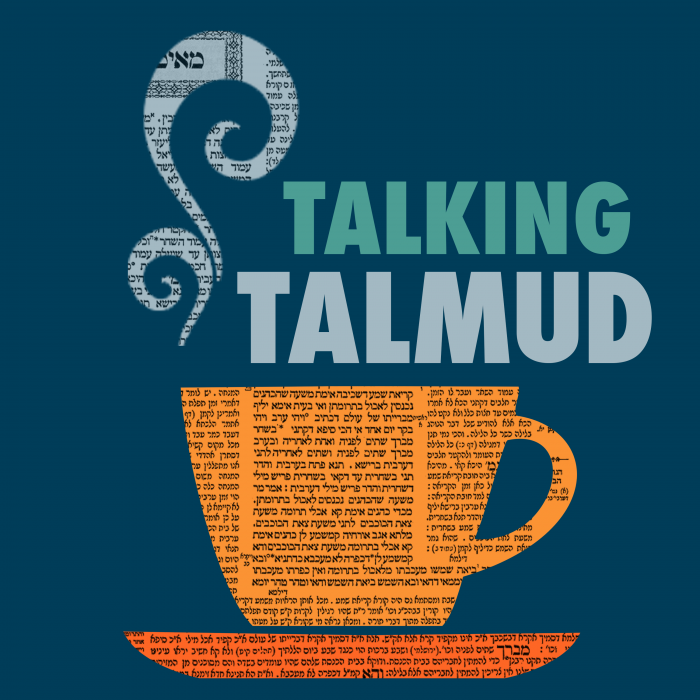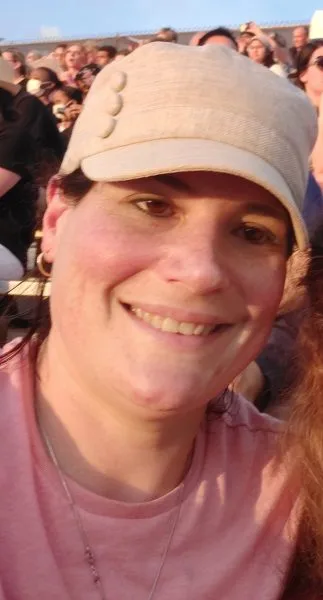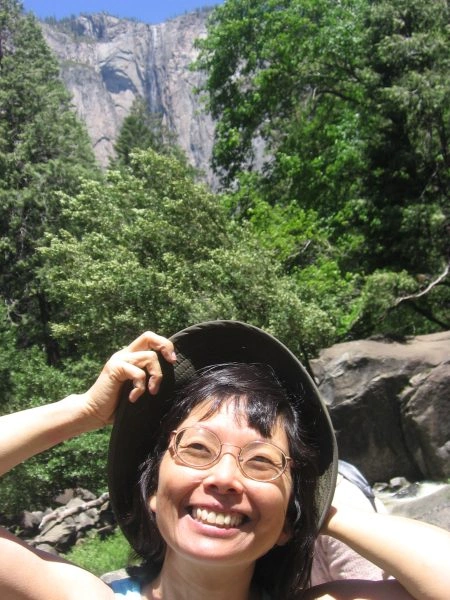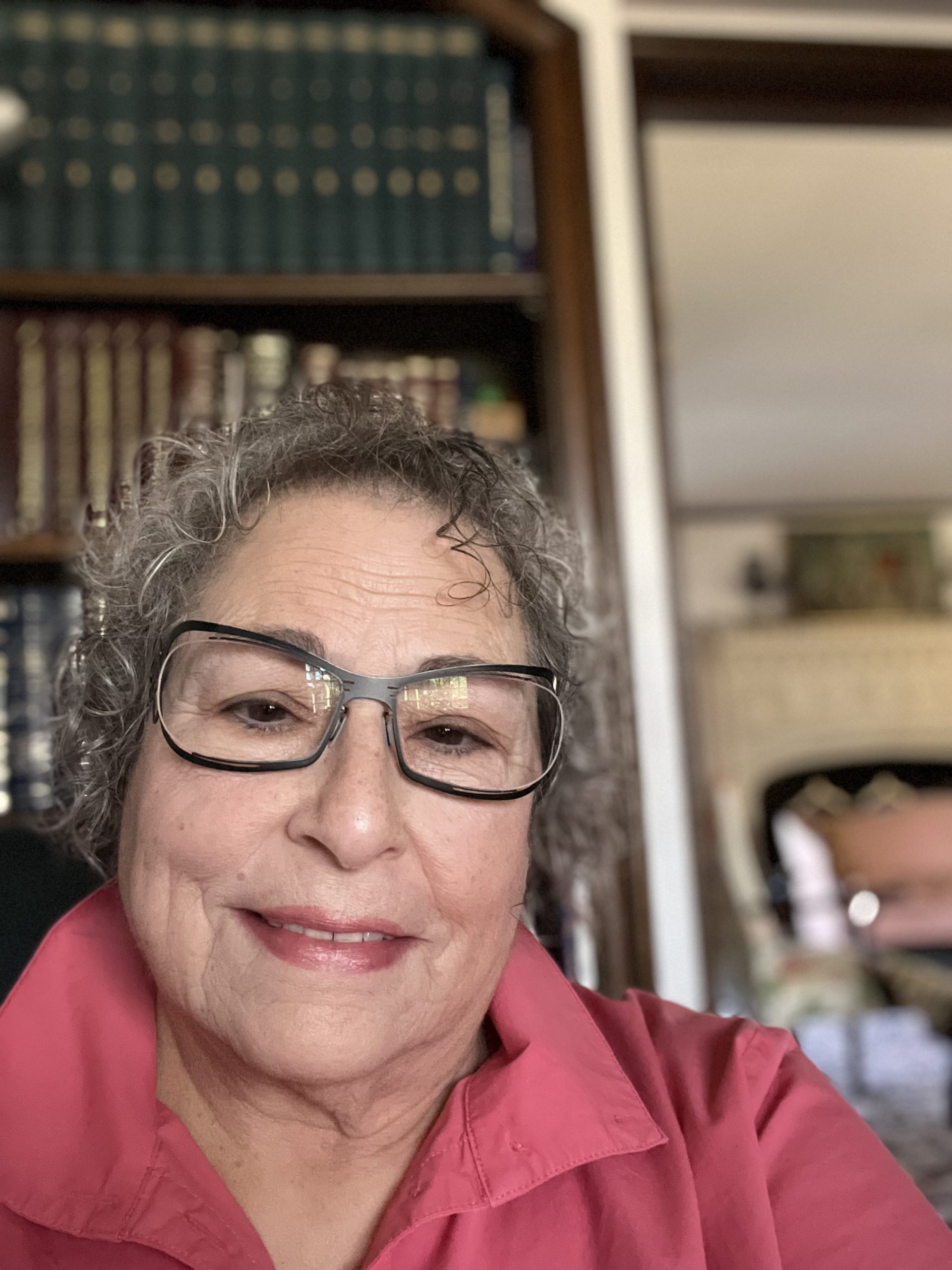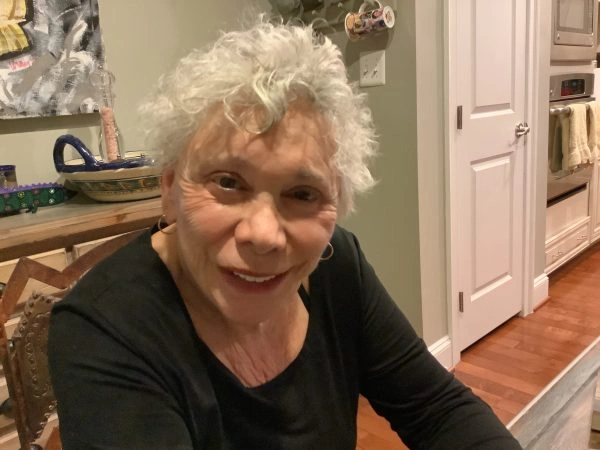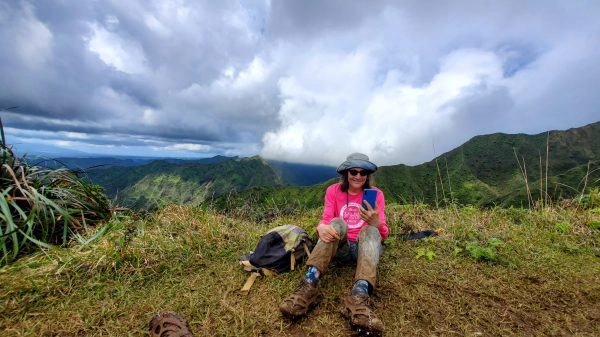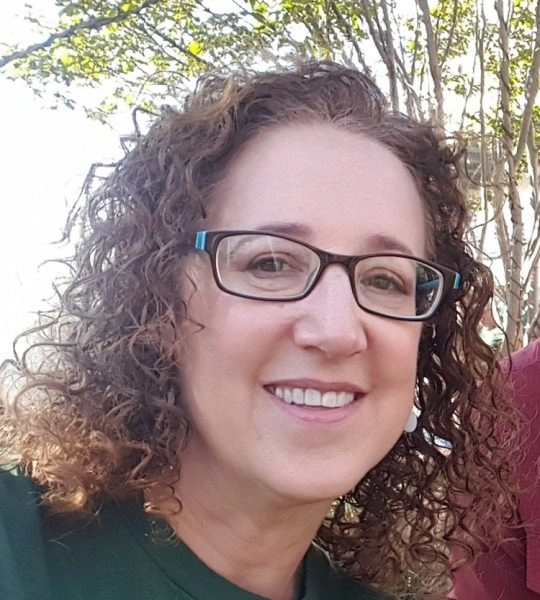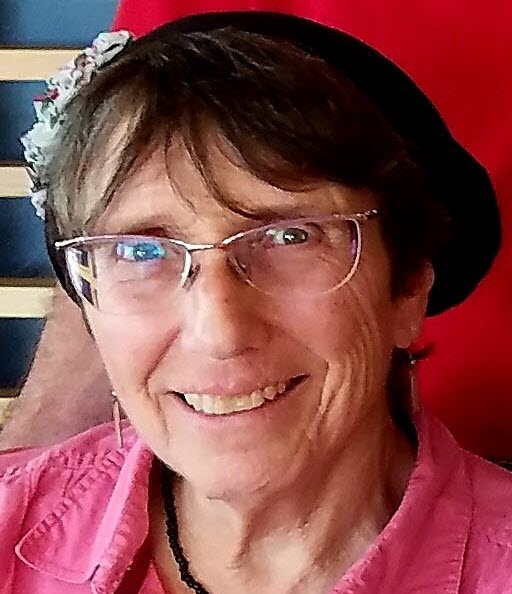Bava Kamma 90
הֶקְדֵּשׁ, חָמֵץ וְשִׁחְרוּר – מַפְקִיעִים מִידֵי שִׁיעְבּוּד.
Consecration of an item to the Temple, the advent of the prohibition of leavened bread taking effect upon a leavened food, and the emancipation of a slave abrogate any lien that exists upon them. Therefore, the emancipation of a slave resulting from the knocking out of his tooth or the blinding of his eye abrogates the lien that the husband has on the slave as usufruct property, leaving the woman as the solitary owner.
לֵימָא דְּרָבָא תַּנָּאֵי הִיא? לָא; דְּכוּלֵּי עָלְמָא אִית לְהוּ דְּרָבָא, וְהָכָא אַלְמוּהּ רַבָּנַן לְשִׁיעְבּוּדָא דְבַעַל.
The Gemara questions this explanation: Shall we say that this statement of Rava is a dispute between tanna’im? According to this explanation, the baraita that states that the slave is not emancipated when he is struck by the woman holds that the lien of the husband is not abrogated, which would run counter to the statement of Rava. The Gemara responds: No; it is the case that everyone agrees with the statement of Rava that a lien is abrogated, and here the reason why the baraita holds that the husband’s lien on the slave is not abrogated is that the Sages strengthened the lien of a husband on his wife’s property, and it is only this type of lien that is not abrogated by emancipation.
וְאִיבָּעֵית אֵימָא: דְּכוּלֵּי עָלְמָא – לֵית לְהוּ לְהָנֵי תַּנָּאֵי תַּקָּנַת אוּשָׁא, וְהָכָא – בְּקִנְיַן פֵּירוֹת כְּקִנְיַן הַגּוּף דָּמֵי קָמִיפַּלְגִי –
And if you wish, say instead that everyone agrees that these tanna’im of the two baraitot hold that there is no ordinance of Usha, and here, they disagree with regard to the question whether ownership of the rights to use an item and to its produce is like ownership of the item itself. In this case, the husband enjoys the usage of the slave while the wife owns the slave himself. The baraita that rules that the slave is not emancipated when struck by the woman holds that the husband is also considered to be an owner, and the baraita that rules that the slave is emancipated when struck by the woman holds that the husband is not considered to be an owner.
וּבִפְלוּגְתָּא דְּהָנֵי תַּנָּאֵי, דְּתַנְיָא: הַמּוֹכֵר עַבְדּוֹ לְאַחֵר, וּפָסַק עִמּוֹ עַל מְנָת שֶׁיְּשַׁמְּשֶׁנּוּ שְׁלֹשִׁים יוֹם;
And the dispute with regard to the question whether ownership of the rights to use an item and to its produce is like ownership of the item itself is with regard to the issue that is the subject of the dispute between these tanna’im, as it is taught in a baraita: In the case of one who sells his Canaanite slave to another, and he contracted with him that the sale is effected on the condition that the slave will serve the seller for thirty days before he is transferred to the purchaser, the outcome of this sale is that during those thirty days, the original master enjoys the usage of the slave and the purchaser is the owner of the slave.
רַבִּי מֵאִיר אוֹמֵר: רִאשׁוֹן יֶשְׁנוֹ בְּדִין יוֹם אוֹ יוֹמַיִם, מִפְּנֵי שֶׁהוּא תַּחְתָּיו. קָסָבַר: קִנְיַן פֵּירוֹת – כְּקִנְיַן הַגּוּף דָּמֵי.
As detailed in the Torah (Exodus 21:18–21), if one strikes another and the injury leads directly to the victim’s death, the one who struck him is liable to receive court-imposed capital punishment. This ruling does not apply in the case where a master strikes his Canaanite slave and the slave lingers with his injuries for more than a day or two and then dies, in which case the master is exempt from court-imposed capital punishment. The baraita addresses who is considered the owner of the slave with regard to this latter halakha. Rabbi Meir says that during those thirty days, only the first owner is included in the halakha of: A day or two days. Rabbi Meir holds that in this case, the first owner is included in this exemption, because the slave is under his authority, as he enjoys the usage of the slave, and he holds that ownership of the rights to use an item and to its produce is like ownership of the item itself. The status of the first owner as the owner also negates the possibility that the second owner would be regarded as the owner with regard to this halakha, and he would not be included in the exemption.
רַבִּי יְהוּדָה אוֹמֵר: שֵׁנִי יֶשְׁנוֹ בְּדִין יוֹם אוֹ יוֹמַיִם, מִפְּנֵי שֶׁהוּא כַּסְפּוֹ. קָסָבַר: קִנְיַן פֵּירוֹת – לָאו כְּקִנְיַן הַגּוּף דָּמֵי.
The baraita continues. Rabbi Yehuda says that only the second owner is included in the halakha of: A day or two days, because the slave is his money, i.e., property, but the first owner is not included in the halakha of: A day or two days, as he holds that ownership of the rights to use an item and to its produce is not like ownership of the item itself. Therefore, the first owner does not have the status of an owner with regard to this halakha.
רַבִּי יוֹסֵי אוֹמֵר: שְׁנֵיהֶם יֶשְׁנָן בְּדִין יוֹם אוֹ יוֹמַיִם; זֶה מִפְּנֵי שֶׁהוּא תַּחְתָּיו, וְזֶה מִפְּנֵי שֶׁהוּא כַּסְפּוֹ. מְסַפְּקָא לֵיהּ קִנְיַן פֵּירוֹת אִי כְּקִנְיַן הַגּוּף דָּמֵי אִי לָאו כְּקִנְיַן הַגּוּף דָּמֵי, וְסָפֵק נְפָשׁוֹת לְהָקֵל.
The baraita continues. Rabbi Yosei says that both of them are included in the halakha of: A day or two days. This one, the first owner, is included because the slave is under his authority, and that one, the second owner, is included because the slave is his money. The Gemara explains the reasoning of Rabbi Yosei: He is uncertain, with regard to ownership of the rights to use an item and to its produce, if it is like ownership of the item itself, in which case only the first owner would be exempt, or if it is not like ownership of the item itself, in which case only the second owner would be exempt. And where there is an uncertainty in a case of capital law, the ruling is to be lenient. Therefore, neither of them would receive court-imposed capital punishment in this case.
רַבִּי אֱלִיעֶזֶר אוֹמֵר: שְׁנֵיהֶם אֵינָן בְּדִין יוֹם אוֹ יוֹמַיִם; זֶה לְפִי שֶׁאֵינוֹ תַּחְתָּיו, וְזֶה לְפִי שֶׁאֵינוֹ כַּסְפּוֹ.
The baraita continues. Rabbi Eliezer says that both of them are not included in the halakha of: A day or two days, and both would receive court-imposed capital punishment. This one, the second owner, would be liable to receive it because the slave is not under his authority, and that one, the first owner, would receive it because the slave is not his money. Rabbi Eliezer holds that one is required both to own the slave himself and enjoy the usage of the slave to be included in the exemption.
אָמַר רָבָא: מַאי טַעְמָא דְּרַבִּי אֱלִיעֶזֶר? אָמַר קְרָא: ״כִּי כַסְפּוֹ הוּא״ – כַּסְפּוֹ הַמְיוּחָד לוֹ.
The Gemara notes that Rava said: What is the reason for the opinion of Rabbi Eliezer? The verse states: “Notwithstanding if he continue a day or two, he shall not be punished; for he is his money” (Exodus 21:21), and Rabbi Eliezer understands this to be referring to a slave that is his money alone, a slave that is unique to him, and therefore this exemption does not apply to one who does not have total ownership of the slave.
כְּמַאן אָזְלָא הָא דְּאָמַר אַמֵּימָר: אִישׁ וְאִשָּׁה שֶׁמָּכְרוּ בְּנִכְסֵי מְלוֹג – לֹא עָשׂוּ וְלֹא כְּלוּם? כְּמַאן – כְּרַבִּי אֱלִיעֶזֶר.
The Gemara asks: In accordance with whose opinion is that which Ameimar says: If there was a man or a woman, i.e., a husband or a wife, who sold the wife’s usufruct property, which is owned by the wife but used by the husband, they did not accomplish anything, as the sale does not take effect? In accordance with whose opinion is his statement? It is in accordance with the opinion of Rabbi Eliezer, who holds that one is considered to be an owner only if he both owns the item itself and enjoys the usage of that item.
מַאן תְּנָא לְהָא דְּתָנוּ רַבָּנַן: מִי שֶׁחֶצְיוֹ עֶבֶד וְחֶצְיוֹ בֶּן חוֹרִין, וְכֵן עֶבֶד שֶׁל שְׁנֵי שׁוּתָּפִין – אֵין יוֹצְאִין בְּרָאשֵׁי אֵבָרִים שֶׁאֵינָן חוֹזְרִין? אֲמַר לֵיהּ רַב מָרְדֳּכַי לְרַב אָשֵׁי, הָכִי אָמְרִי מִשְּׁמֵיהּ דְּרָבָא: רַבִּי אֱלִיעֶזֶר הִיא –
The Gemara asks: Who is the tanna who taught that which the Sages taught: One who is a half-slave half-freeman, and similarly, a slave belonging to two partners, are not emancipated when injured by one of their owners in one of their extremities that do not regenerate, i.e., the twenty-four extremities whose injury by an owner emancipates a slave? Rav Mordekhai said to Rav Ashi: This is what the Sages say in the name of Rava: It is in accordance with the opinion of Rabbi Eliezer.
מִי לָא אָמַר רַבִּי אֱלִיעֶזֶר: ״כַּסְפּוֹ״ – הַמְיוּחָד לוֹ? הָכָא נָמֵי, ״עַבְדּוֹ״ – הַמְיוּחָד לוֹ.
He explains: Didn’t Rabbi Eliezer say that the term “his money” indicates a slave that is unique to him? Here too, since the verse states with regard to the emancipation of a slave resulting from his master striking him: “And if a man smite the eye of his slave” (Exodus 21:26), this is referring to his slave that is unique to him. Therefore, this halakha of emancipation would not apply to a slave not fully owned by one master.
מַתְנִי׳ הַתּוֹקֵעַ לַחֲבֵירוֹ – נוֹתֵן לוֹ סֶלַע. רַבִּי יְהוּדָה אוֹמֵר מִשּׁוּם רַבִּי יוֹסֵי הַגְּלִילִי: מָנֶה. סְטָרוֹ – נוֹתֵן לוֹ מָאתַיִם זוּז. לְאַחַר יָדוֹ – נוֹתֵן לוֹ אַרְבַּע מֵאוֹת זוּז.
MISHNA: One who strikes another must give him a sela. Rabbi Yehuda says in the name of Rabbi Yosei HaGelili that he must give him one hundred dinars. If he slapped another on the cheek, he must give him two hundred dinars. If he slapped him on the cheek with the back of his hand, which is more degrading than a slap with the palm, he must give him four hundred dinars.
צָרַם בְּאׇזְנוֹ; תָּלַשׁ בִּשְׂעָרוֹ; רָקַק – וְהִגִּיעַ בּוֹ רוּקּוֹ; הֶעֱבִיר טַלִּיתוֹ מִמֶּנּוּ; פָּרַע רֹאשׁ הָאִשָּׁה בַּשּׁוּק – נוֹתֵן לוֹ אַרְבַּע מֵאוֹת זוּז.
If he pulled his ear, or pulled out his hair, or spat at him and his spittle reached him, or if he removed the other’s cloak from him, or if he uncovered the head of a woman in the marketplace, in all of these cases, he must give the injured party four hundred dinars.
זֶה הַכְּלָל – הַכֹּל לְפִי כְּבוֹדוֹ. אָמַר רַבִּי עֲקִיבָא: אֲפִילּוּ עֲנִיִּים שֶׁבְּיִשְׂרָאֵל, רוֹאִין אוֹתָם כְּאִילּוּ הֵם בְּנֵי חוֹרִין שֶׁיָּרְדוּ מִנִּכְסֵיהֶם; שֶׁהֵם בְּנֵי אַבְרָהָם יִצְחָק וְיַעֲקֹב.
This is the principle of assessing payment for humiliation caused to another: It is all evaluated in accordance with the honor of the one who was humiliated, as the Gemara will explain. Rabbi Akiva said: Even with regard to the poor among the Jewish people, they are viewed as though they were freemen who lost their property and were impoverished. And their humiliation is calculated according to this status, as they are the children of Abraham, Isaac, and Jacob, and are all of prominent lineage.
וּמַעֲשֶׂה בְּאֶחָד שֶׁפָּרַע רֹאשׁ הָאִשָּׁה בַּשּׁוּק, בָּאת לִפְנֵי רַבִּי עֲקִיבָא, וְחִיְּיבוֹ לִיתֵּן לָהּ אַרְבַּע מֵאוֹת זוּז. אָמַר לוֹ: רַבִּי, תֵּן לִי זְמַן. וְנָתַן לוֹ זְמַן.
The mishna relates: And an incident occurred involving one who uncovered the head of a woman in the marketplace, and the woman came before Rabbi Akiva to request that he render the assailant liable to pay for the humiliation that she suffered, and Rabbi Akiva rendered the assailant liable to give her four hundred dinars. The man said to Rabbi Akiva: My teacher, give me time to pay the penalty, and Rabbi Akiva gave him time.
שְׁמָרָהּ עוֹמֶדֶת עַל פֶּתַח חֲצֵרָהּ, וְשָׁבַר אֶת הַכַּד בְּפָנֶיהָ, וּבוֹ כְּאִיסָּר שֶׁמֶן. גִּילְּתָה אֶת רֹאשָׁהּ, וְהָיְתָה מְטַפַּחַת וּמַנַּחַת יָדָהּ עַל רֹאשָׁהּ.
The man then waited for her until she was standing by the opening of her courtyard, and he broke a jug in front of her, and there was the value of about an issar of oil inside the jug. The woman then exposed her own head and she was wetting [metapaḥat] her hand in the oil, and placing her hand on her head to make use of the oil.
הֶעֱמִיד עָלֶיהָ עֵדִים, וּבָא לִפְנֵי רַבִּי עֲקִיבָא; אָמַר לוֹ: לָזוֹ אֲנִי נוֹתֵן אַרְבַּע מֵאוֹת זוּז?!
The man set up witnesses to observe her actions, and he came before Rabbi Akiva, and he said to him: Will I give four hundred dinars to this woman for having uncovered her head? By uncovering her head for a minimal benefit, she has demonstrated that this does not cause her humiliation.
אָמַר לוֹ: לֹא אָמַרְתָּ כְּלוּם. הַחוֹבֵל בְּעַצְמוֹ, אַף עַל פִּי שֶׁאֵינוֹ רַשַּׁאי – פָּטוּר; אֲחֵרִים שֶׁחָבְלוּ בּוֹ – חַיָּיבִים. וְהַקּוֹצֵץ נְטִיעוֹתָיו, אַף עַל פִּי שֶׁאֵינוֹ רַשַּׁאי – פָּטוּר; אֲחֵרִים – חַיָּיבִין.
Rabbi Akiva said to him: You did not say anything, i.e., this claim will not exempt you. One who injures himself, although it is not permitted for him to do so, is nevertheless exempt from any sort of penalty, but others who injured him are liable to pay him. In this case as well, the man was liable to compensate the woman for shaming her, despite the fact that she did the same to herself. Similarly, one who cuts down his own saplings, although it is not permitted for him to do so, as this violates the prohibition of: “You shall not destroy” (see Deuteronomy 20:19), is exempt from any penalty, but others who cut down his saplings are liable to pay him.
גְּמָ׳ אִיבַּעְיָא לְהוּ: מָנֶה צוֹרִי תְּנַן, אוֹ מָנֶה מְדִינָה תְּנַן?
GEMARA: The mishna teaches that according to the opinion of Rabbi Yosei HaGelili, one who strikes another must pay him one hundred dinars. The Gemara clarifies this opinion. A dilemma was raised before the Sages: Did we learn in the mishna that he must pay one hundred dinars of Tyrian coinage, or did we learn in the mishna that he must pay one hundred dinars of state coinage, which is worth one-eighth of Tyrian coinage, i.e., twelve and a half dinars of Tyrian coinage?
תָּא שְׁמַע: דְּהָהוּא גַּבְרָא דִּתְקַע לֵיהּ לְחַבְרֵיהּ. אֲתָא לְקַמֵּיהּ דְּרַבִּי יְהוּדָה נְשִׂיאָה, אֲמַר לֵיהּ: הָא אֲנָא, הָא רַבִּי יוֹסֵי הַגְּלִילִי, הַב לֵיהּ מָנֶה צוֹרִי. שְׁמַע מִינַּהּ: מָנֶה צוֹרִי תְּנַן! שְׁמַע מִינַּהּ.
The Gemara answers: Come and hear a proof: It happened that there was a certain man who struck another man, and the latter came before Rabbi Yehuda Nesia to request an assessment for the humiliation he suffered. Rabbi Yehuda Nesia said to the assailant: This is I, and this is Rabbi Yosei HaGelili. Give him one hundred dinars of Tyrian coinage. The Gemara suggests: Conclude from the incident that we learned in the mishna he must pay one hundred dinars of Tyrian coinage. The Gemara affirms: Conclude from it that it is so.
מַאי ״הָא אֲנָא, הָא רַבִּי יוֹסֵי הַגְּלִילִי״? אִילֵּימָא הָכִי קָאָמַר לֵיהּ: הָא אֲנָא – דַּחֲזֵיתָךְ, וְהָא רַבִּי יוֹסֵי הַגְּלִילִי – דְּאָמַר מָנֶה צוֹרִי, זִיל הַב לֵיהּ מָנֶה צוֹרִי. לְמֵימְרָא דְּעֵד נַעֲשֶׂה דַּיָּין?!
The Gemara clarifies: What did Rabbi Yehuda Nesia mean when he stated: This is I, and this is Rabbi Yosei HaGelili? If we say that this is what Rabbi Yehuda Nesia said to the assailant: This is I, who saw you strike the man, and this is the opinion of Rabbi Yosei HaGelili, who says that the penalty for this act is one hundred dinars of Tyrian coinage; therefore, go and give him one hundred dinars of Tyrian coinage, is this to say that a witness can become a judge, i.e., that one who witnessed an event can himself serve as a judge concerning the matter, and consequently Rabbi Yehuda Nesia was able to act as both witness and judge in the same case?
וְהָתַנְיָא: סַנְהֶדְרִין שֶׁרָאוּ אֶחָד שֶׁהָרַג אֶת הַנֶּפֶשׁ – מִקְצָתָן נַעֲשׂוּ עֵדִים, וּמִקְצָתָן נַעֲשׂוּ דַּיָּינִין; דִּבְרֵי רַבִּי טַרְפוֹן. רַבִּי עֲקִיבָא אוֹמֵר: כּוּלָּם עֵדִים הֵם, וְאֵין עֵד נַעֲשֶׂה דַּיָּין.
But isn’t it taught in a baraita that if there was a Sanhedrin that saw one kill another person, some of them have become witnesses and testify before the others, and some of them have become judges to issue a verdict; this is the statement of Rabbi Tarfon. Rabbi Akiva says: They are all witnesses to the act, and a witness cannot become a judge.
עַד כָּאן לָא קָאָמַר רַבִּי טַרְפוֹן – אֶלָּא דְּמִקְצָתָן נַעֲשׂוּ עֵדִים וּמִקְצָתָן נַעֲשׂוּ דַּיָּינִין; אֲבָל עֵד נַעֲשֶׂה דַּיָּין – לָא קָאָמַר!
The Gemara infers from this baraita that even Rabbi Tarfon says his opinion only in a case where some of the members of the Sanhedrin have become witnesses and some of them have become judges, but he did not say that a witness becomes a judge without anyone else testifying. All the more so according to the opinion of Rabbi Akiva would it not be permitted for Rabbi Yehuda Nesia to act as a judge as well as serving as a witness.
כִּי תַּנְיָא הָהִיא – כְּגוֹן שֶׁרָאוּ בַּלַּיְלָה, דְּלָא (לְמֶעְבַּד) [בְּנֵי מֶעְבַּד] דִּינָא נִינְהוּ.
The Gemara rejects this: One could say that when that baraita is taught, it is taught in a case where the Sanhedrin saw the murder at night, at which time it is not permitted for them to practice judgment, since cases of capital law may be judged only during the daytime. They were therefore not functioning as judges at that time. On the following day, testimony must be heard from some, now acting as witnesses, in front of the others, now acting as judges. By contrast, in the case of Rabbi Yehuda Nesia, he was able to serve as both the witness and the judge, as he witnessed the event while functioning as a judge.
וְאִיבָּעֵית אֵימָא, הָכִי קָאָמַר לֵיהּ: הָא אֲנָא – דִּסְבִירָא לִי כְּרַבִּי יוֹסֵי הַגְּלִילִי, דְּאָמַר מָנֶה צוֹרִי; וְהָא סָהֲדִי דְּמַסְהֲדִי בָּךְ; זִיל הַב לֵיהּ מָנֶה צוֹרִי.
The Gemara offers an alternative explanation: And if you wish, say instead that Rabbi Yehuda Nesia did not witness the incident, and this is what he said to the assailant: This is I, that I hold in accordance with the opinion of Rabbi Yosei HaGelili, who says that one hundred dinars of Tyrian coinage must be paid; and these are witnesses who testify concerning you that you struck the other. Therefore, go and give him one hundred dinars of Tyrian coinage.
וְסָבַר רַבִּי עֲקִיבָא דְּאֵין עֵד נַעֲשֶׂה דַּיָּין?
§ The Gemara discusses the previously mentioned opinion of Rabbi Akiva: But does Rabbi Akiva hold that a witness cannot become a judge?
וְהָתַנְיָא: ״וְהִכָּה אִישׁ אֶת רֵעֵהוּ בְּאֶבֶן אוֹ בְאֶגְרֹף״ – שִׁמְעוֹן הַתִּימְנִי אוֹמֵר: מָה אֶגְרוֹף מְיוּחָד – שֶׁמָּסוּר לָעֵדָה וְלָעֵדִים, אַף כֹּל שֶׁמָּסוּר לָעֵדָה וְלָעֵדִים; פְּרָט לְשֶׁיָּצְתָה מִתַּחַת יַד הָעֵדִים.
But isn’t it taught in a baraita (Tosefta, Sanhedrin 12:3) with regard to what is stated in the Torah concerning injuries: “And if men contend, and one smite the other with a stone, or with his fist” (Exodus 21:18), that Shimon HaTimni says: Just as a fist is unique in that it is submitted to the assembly of judges to assess its ability to injure and to the witnesses who attest that it was the fist used to strike, as a fist remains attached to the assailant, so too, a ruling can be issued in the case of any item that is submitted to the assembly of judges to assess its ability to injure and to the witnesses who attest that this was the item used to strike? This serves to exclude a case where the stone that injured left the possession of the witnesses and is not available to be inspected by the court to assess if it is capable of causing the purported injury.
אָמַר לוֹ רַבִּי עֲקִיבָא: וְכִי בִּפְנֵי בֵּית דִּין הִכָּהוּ – שֶׁיּוֹדְעִין כַּמָּה הִכָּהוּ, וְעַל מָה הִכָּהוּ – אִם עַל שׁוֹקוֹ אוֹ צִיפַּר נַפְשׁוֹ?
Rabbi Akiva said to him: But is it the case that in all incidents of injury the assailant struck him in the presence of the court, so that they know exactly how hard he struck him and on what part of the body he struck him, e.g., if he struck him on his thigh or if he struck him on the lobe of his heart? Rather, the court relies on witnesses to testify about the injury. Therefore, the witnesses should be able to testify about the item used as well.
וְעוֹד, הֲרֵי שֶׁדָּחַף אֶת חֲבֵירוֹ מֵרֹאשׁ הַגָּג אוֹ מֵרֹאשׁ הַבִּירָה וָמֵת – בֵּית דִּין הוֹלְכִין אֵצֶל בִּירָה, אוֹ בִירָה הוֹלֶכֶת אֵצֶל בֵּית דִּין? וְעוֹד, אִם נָפְלָה, חוֹזֵר וּבוֹנֶה?!
And furthermore, if there was one who pushed another from the top of the roof or from the top of a building, and the one who was pushed died as a result of the fall, do the members of the court go to the building to inspect how high it is, or does the building go to the court? Obviously neither, and the court relies upon the testimony of witnesses who state how tall the building is. And furthermore, if the building collapsed, must the court rebuild it in order to assess its height? The witnesses should then be able to testify about the item used as well.
אֶלָּא מָה אֶגְרוֹף מְיוּחָד – שֶׁהוּא מָסוּר לָעֵדִים, אַף כֹּל שֶׁהוּא מָסוּר לָעֵדִים;
Rather, Rabbi Akiva interprets the verse differently: Just as a fist is unique in that it is submitted to the witnesses for them to testify about it, so too, a ruling can be issued in the case of any item that is submitted to the witnesses to testify about, despite the item’s not being available for the court to assess.
פְּרָט לִכְשֶׁיָּצְתָה אֶבֶן מִתַּחַת יָדוֹ שֶׁל מַכֶּה – פָּטוּר.
This serves to exclude a case where the stone that injured left the possession of the assailant and cannot be found, and even the witnesses were unable to see it. In such a case the assailant is exempt from payment, since even the witnesses cannot testify about whether the stone was capable of inflicting the purported injuries.
קָתָנֵי מִיהַת, אָמַר לוֹ רַבִּי עֲקִיבָא: וְכִי בִּפְנֵי בֵּית דִּין הִכָּהוּ, שֶׁיּוֹדְעִין כַּמָּה הִכָּהוּ? הָא הִכָּהוּ בִּפְנֵיהֶם – עֵד נַעֲשֶׂה דַּיָּין!
The Gemara states its question: In any event, it teaches that Rabbi Akiva said to Shimon HaTimni: Are all cases of injury such that the assailant struck him in the presence of the court so that they know exactly how hard he struck him? It can be inferred from this that if he did in fact strike him in front of them, Rabbi Akiva would agree that a witness can become a judge. This contradicts the opinion of Rabbi Akiva in the baraita, that a witness cannot become a judge.
לִדְבָרָיו דְּרַבִּי שִׁמְעוֹן הַתִּימְנִי קָאָמַר, וְלֵיהּ לָא סְבִירָא לֵיהּ.
The Gemara answers that there is no proof as to the opinion of Rabbi Akiva, since it may be that he stated his refutation in accordance with the statement of Shimon HaTimni, but he himself does not hold accordingly. Perhaps Rabbi Akiva himself holds that if the court had witnessed the act, they would not be able to render judgment concerning it.
תָּנוּ רַבָּנַן: שׁוֹר תָּם שֶׁהֵמִית וְהִזִּיק – דָּנִין אוֹתוֹ דִּינֵי נְפָשׁוֹת, וְאֵין דָּנִין אוֹתוֹ דִּינֵי מָמוֹנוֹת.
The Gemara quotes a related halakha. The Sages taught: In the case of an innocuous ox that killed a person and subsequently went and caused damage, the court judges it as a case of capital law and the ox is killed, and the court does not judge it as a case of monetary law, despite the damage that it caused.
מוּעָד שֶׁהֵמִית וְהִזִּיק – דָּנִין אוֹתוֹ דִּינֵי מָמוֹנוֹת, וְחוֹזְרִין וְדָנִין אוֹתוֹ דִּינֵי נְפָשׁוֹת. קָדְמוּ וְדָנוּהוּ דִּינֵי נְפָשׁוֹת – אֵין חוֹזְרִין וְדָנִין אוֹתוֹ דִּינֵי מָמוֹנוֹת.
By contrast, in the case of a forewarned ox that killed a person and subsequently went and caused damage, the court judges it as a case of monetary law, and the owner is liable to pay for the damage it caused, and then the court goes back and judges it again as a case of capital law, and the ox is killed. But if the court proceeded and judged it first as a case of capital law, the court does not go back and judge it again as a case of monetary law, since it has already been sentenced to be killed.
וְכִי קָדְמוּ וְדָנוּהוּ דִּינֵי נְפָשׁוֹת מַאי הָוֵי? לִיהְדַּר וְלִידַיְינֵיהּ (נָמֵי) [דִּינֵי] מָמוֹנוֹת!
The Gemara asks: And if they proceeded and judged it first as a case of capital law, what of it? Let them go back and judge it again also as a case of monetary law.
אֲמַר רָבָא: אַשְׁכַּחְתִּינְהוּ לְרַבָּנַן דְּבֵי רַב, דְּיָתְבִי וְקָאָמְרִי: הָא מַנִּי – רַבִּי שִׁמְעוֹן הַתִּימְנִי הִיא, דְּאָמַר: ״מָה אֶגְרוֹף מְיוּחָד – שֶׁמָּסוּר לָעֵדָה וְלָעֵדִים״,
Rava said: I found the Sages of the school of Rav who were sitting and saying to explain this: In accordance with whose opinion is this? It is in accordance with the opinion of Rabbi Shimon HaTimni, who says that just as a fist is unique in that it is submitted to the assembly of judges to assess its ability to injure and to the witnesses to attest that this was the fist used to strike, so too, a ruling can be issued in the case of any item that is submitted to the assembly of judges to assess its ability to injure and to the witnesses to attest that this was the item used to strike.



